
This page provides, in brief, some basic information on the 2dF QSO
Redshift Survey (2QZ).
Survey area
The 2QZ survey covers two 75° × 5° declination strips.
One near the South Galactic Pole at declination=-30° in the range RA=21h40
to 03h15 (the SGP strip) and a second in an equatorial
strip (declination=0°) near the North Galactic Pole in the region RA=09h50
to 14h50 (the NGP or equatorial strip). The plot
below shows the position of the strips on the sky, as well as the positions
of all previously known QSOs (black points; Veron-Cetty & Veron 2000).
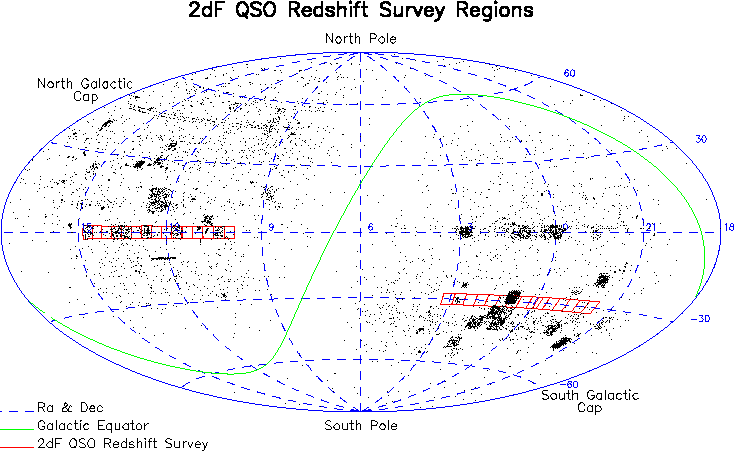
This survey area was tiled with an overlapping mosaic of 2dF fields,
designed to obtain maximum coverage from the minimum number of 2dF pointings.
The list of field names and their centres can be found here.
Note that the survey was constructed in a B1950 coordinate system.
Magnitude and colour limits
The 2QZ is flux limited in the bJ band. Magnitudes were determined
from APM
scans of UKST photgraphic
plates. The survey limits are 18.25<bJ<20.85, with
the brighter 6dF QSO Redshift Survey (6QZ) being limited to 16.0<bJ<18.25,
and observed with 6dF
on the
UKST.
Colour selection was made in the u-bJ vs. bJ-r
plane. In the plot below, QSO candidates are all those points below or
left of the dotted line. Large blue points are previously known QSOs.
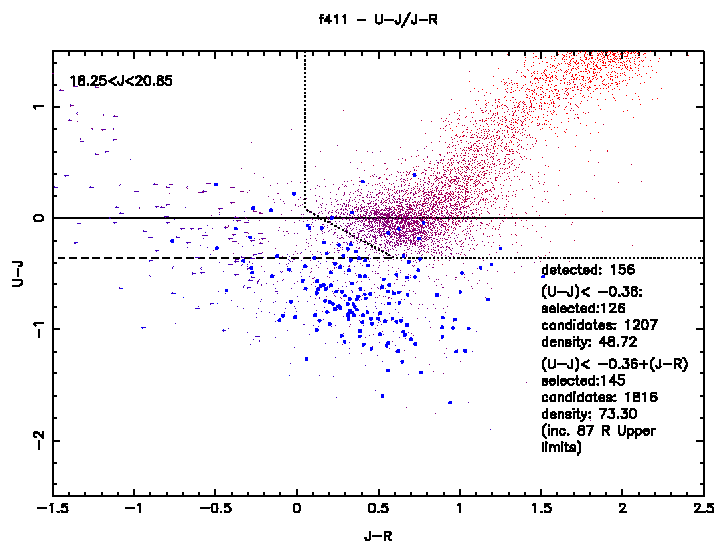
2dF Observations
The survey was carried out at the Anglo-Australian
Telescope using the 2-degree Field
multi-object spectrographic system. Up to 400 spectra can be obtained
at once using this state-of-the-art instrument. This huge multiplex gain
has allowed surveys such as the 2QZ to become a reality.
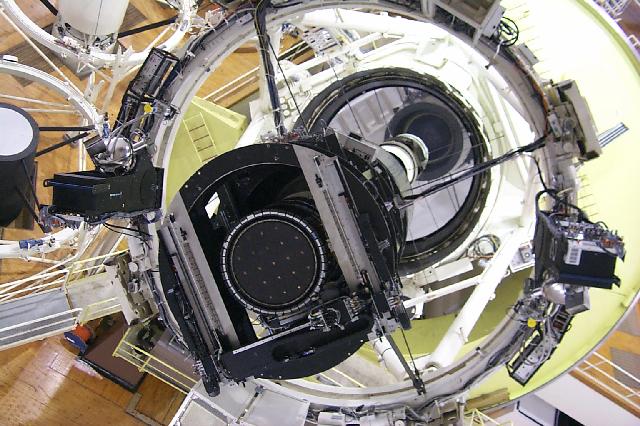
2dF on the AAT with the primary mirror in the background.
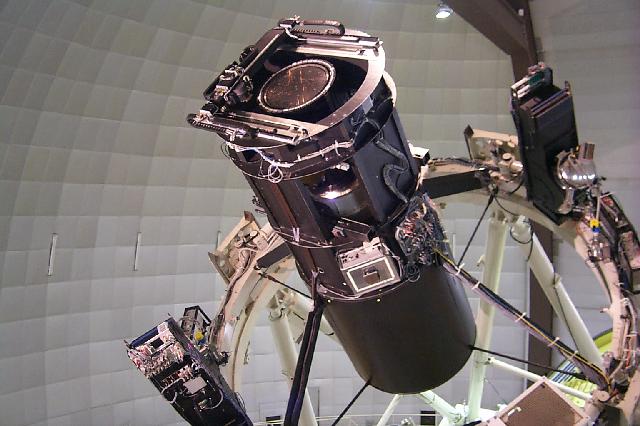
2dF at the AAT prime focus. The two spectrographs are located
on the outer rim of the top end ring.
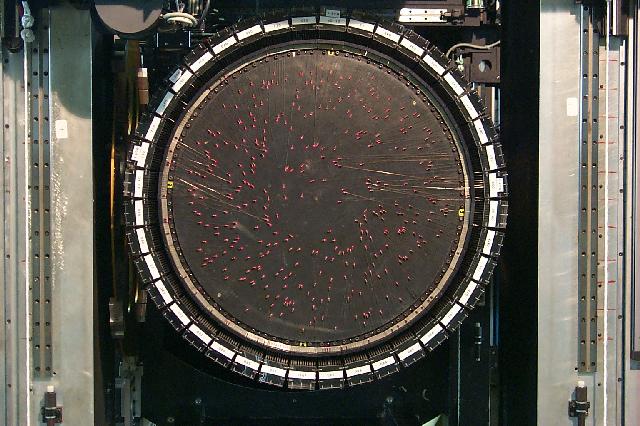
A 2dF field plate configured for observation. The fibres are
back illuminated by red LEDs.
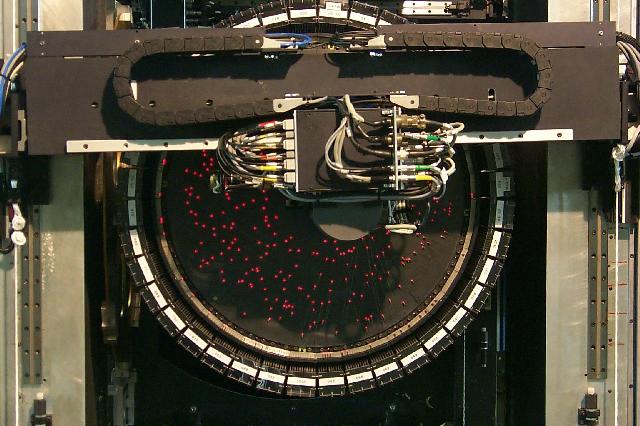
The 2dF robot fibre positioner in action.
6dF Observations
The brighter portion of the survey (the 6dF QSO Redshift Survey; 6QZ) was
carried out at the UK Schmidt Telescope
using
the 6-degree Field
multi-object
spectrographic system. Up to 150 spectra can be obtained at once
over a 6 degree diameter field of view.
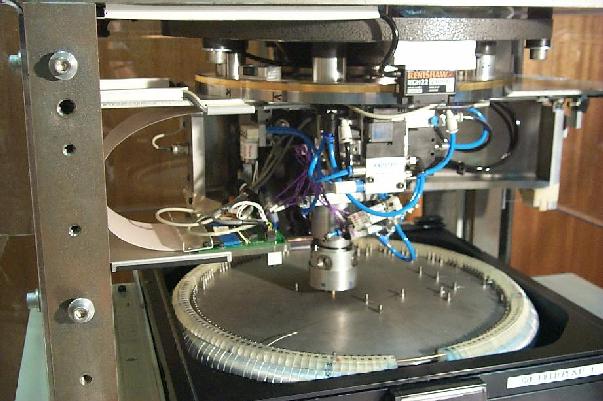
The 6dF robot positioning fibres.
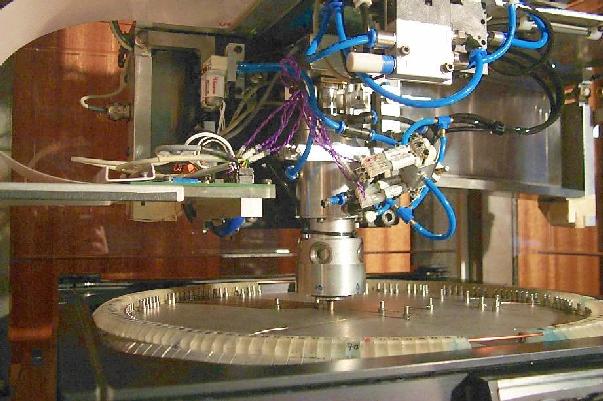
A closer view of the 6dF system.
Back to 2QZ home
Back to Spectroscopic catalogue home
The 2QZ team (July 2003)









